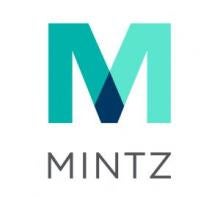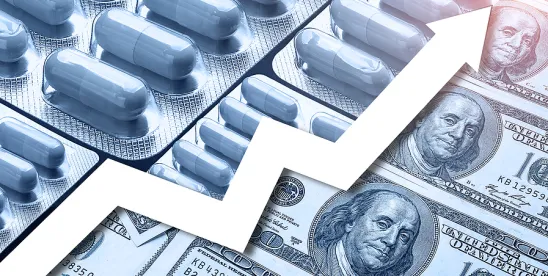On April 15, 2025, President Trump issued an Executive Order instructing federal agencies to implement a variety of drug pricing reforms. The Executive Order addresses drug pricing from several different angles, including pharmacy benefit manager (PBM) competition and transparency, Medicare and Medicaid drug pricing, international importation, and drug manufacturer competition (Executive Order).
The Executive Order, which is the first significant action taken by the current administration to address drug prices, echoes initiatives and policy statements announced during the first Trump administration. However, most of the drug pricing reforms announced during the first administration were never fully implemented. It is unclear how many of the proposals in this Executive Order will ultimately be implemented, but it does provide the clearest outline yet of the Trump administration’s policy priorities regarding drug prices.
Targeting the Inflation Reduction Act "Pill Penalty" and High-Cost Medicare Drugs
-
Improving upon the Inflation Reduction Act. The Executive Order directs the Secretary of Health and Human Services (HHS) to propose and seek comment on guidance for the Medicare Drug Price Negotiation Program (Negotiation Program). The stated purpose of the guidance is to “improve the transparency of the Negotiation Program, prioritize the selection of prescription drugs with high costs to the Medicare program, and minimize any negative impacts of the maximum fair price (MFP) on pharmaceutical innovation within the United States.” Prior predictions that a second Trump administration would seek to repeal the Inflation Reduction Act (IRA) and replace the Negotiation Program now seem off the table. Instead, the inclusion of this section suggests that this second Trump administration will, at least initially, seek opportunities to improve the existing Negotiation Program.
One such area for possible improvement is the IRA’s so-called “pill penalty.” Under the IRA, small molecule drugs (which are typically pills) are eligible for price negotiation nine years following approval by the Food and Drug Administration (FDA), whereas biological products become eligible after 13 years. The “pill penalty” has been the subject of ire for many manufacturers who have argued that it stifles innovation. The Executive Order directs HHS to work with Congress to modify the Negotiation Program to align the treatment of small molecule prescription drugs with that of biological products.
The Executive Order also directs officials to establish recommendations to President Trump on “how best to stabilize and reduce Medicare Part D premiums.” In 2022, the IRA redesigned the Medicare Part D benefit, which among other things capped Part D beneficiaries’ out-of-pocket expenses at $2,000. After a Part D beneficiary meets this $2,000 threshold, Medicare then covers 100% of such beneficiary’s remaining costs for the year. The IRA also provides a premium stabilization mechanism to limit the average premium increases for people enrolled in Part D to about $2 per month on average. In July 2024, the Centers for Medicare & Medicaid Services (CMS) announced a premium stabilization demonstration to test whether additional stabilization was needed. President Trump’s inclusion of this directive in the Executive Order suggests that this administration may seek to continue this model.
- Demonstration Model on High-Cost Medicare Drugs. The Executive Order instructs HHS to develop and implement a Center for Medicare and Medicaid Innovation (CMMI) payment demonstration to improve the ability of the Medicare program to obtain better value for high-cost prescription drugs and biological products, including those not subject to the Negotiation Program. CMMI was created by the Affordable Care Act (ACA) in 2010 to test payment models (i.e., demonstrations) in Medicare, Medicaid, and the Children’s Health Insurance Program. In March, we wrote about CMMI’s premature termination of four payment and delivery demonstrations and the broader questions it raised about the future of CMMI. At the time, we noted that there was no indication that the Trump administration was planning to more broadly limit CMMI’s authority or terminate other models. The inclusion of the payment demonstration in the Executive Order lends further support to this and indicates that the administration intends to use CMMI to further its goals related to Medicare drug cost.
Focus on Pharmacy Benefit Manager Transparency
- Reevaluating the Role of Middlemen. The Executive Order directs officials to develop recommendations to President Trump on how “best to promote a more competitive, efficient, transparent, and resilient pharmaceutical value chain that delivers lower drug prices for Americans.” As we outlined in the Winter 2025 edition of our PBM Update, President Trump has long been a critic of PBMs and the high costs of prescription drugs that Americans pay in comparison to other countries’ citizens. While the Executive Order does not explicitly delineate any methods or data sets that officials should consider in making their recommendations, the inclusion of this directive suggests that the role of PBMs may still be at the forefront of President Trump’s mind.
-
Consolidated Appropriations Act PBM Fee Disclosures. The Executive Order instructs the Secretary of Labor to propose regulations implementing Section 408(b)(2)(B) of the Employee Retirement Income Security Act of 1974 (ERISA) to improve employer health plan fiduciary transparency into the compensation paid to PBMs. Pursuant to the Consolidated Appropriations Act of 2021 (the CAA), Congress amended Section 408(b)(2)(B) to require service providers to group health plans organizations to disclose information to a responsible plan fiduciary about any direct and indirect compensation the service provider expects to receive in connection with providing “brokerage services” or “consulting” to a plan. Service providers must make such disclosures for any affiliates and subcontractors as well.
There has been some ambiguity about whether PBMs, under certain arrangements, are service providers subject to the disclosure requirements as a result of ambiguous statutory drafting and the Department of Labor’s (DOL) refusal to issue implementing regulations. Some PBMs have taken the position that they are not service providers, and there has been little public indication that the DOL has been closely monitoring compliance.
In March 2023, the DOL issued a field assistance bulletin outlining a temporary enforcement policy for the CAA disclosure requirements and requiring service providers to comply in good faith with the requirements, although the 2023 guidance does not provide any additional clarity on the applicability of the disclosure requirements to PBMs or otherwise outline a recommended format for the disclosures. Notably, the DOL stated that it was not required to issue comprehensive implementing regulations and indicated that it had no plans do so, instead referencing regulations it had issued about a decade prior for analogous disclosure requirements for investment plan advisors.
By instructing the DOL to issue regulations, and calling PBMs out specifically, the Executive Order indicates that the DOL will address confusion about the applicability of the disclosure requirements to PBMs. If and once DOL issues and finalizes these regulations, DOL scrutiny over these requirements will likely increase.
Sharing 340B Program Savings with Hospital and Patients
- Appropriately Accounting for Acquisition Costs of Drugs in Medicare. The Executive Order instructs HHS to publish in the Federal Register a plan to conduct a survey to determine hospital outpatient departments’ acquisition costs for covered outpatient drugs and to propose adjustments that would align Medicare payment with the cost of acquisition. In 2018 and 2019, HHS established separate reimbursement rates for 340B-participating hospitals and other hospitals. In its decision in American Hospital Ass’n v. Becerra, 596 U.S. 724 (2022), the Supreme Court of the United States held that HHS’s actions were unlawful because HHS failed to conduct a survey of the hospitals’ acquisition costs prior to setting reimbursement rates that differed by hospital group. The inclusion of this section in the Executive Order suggests that President Trump wishes to ensure HHS will follow the proper procedure prior to once again setting separate reimbursement rates for hospitals participating in the 340B drug pricing program.
-
Access to Affordable Life-Saving Medications. The Executive Order seeks to revive a controversial proposal from the first Trump administration that would require community health centers to “make insulin and injectable epinephrine available [to their patients] at or below” the 340B price paid by the health center. The Executive Order instructs HHS to take action that would condition federal grants to community health centers providing 340B-priced insulin and epinephrine (commonly sold as Epi-Pens) to patients who “(a) have a high cost-sharing requirement for either insulin or injectable epinephrine; (b) have a high unmet deductible; or (c) have no healthcare insurance.” The Executive Order’s associated Fact Sheet states that insulin prices “will be” as low as “$0.03, plus a small administrative fee” and injectable epinephrine “will be” as low as “$15, plus a small administrative fee.”
This proposal was initially put forth by the first Trump administration in December 2020. However, the Biden administration immediately froze implementation of the proposed rule upon taking office and instead opened a five-day comment window in March 2021 resulting in around two hundred comments from interested parties, the vast majority in opposition. Later that year, the Biden administration rescinded the proposed rule citing “the excessive administrative costs and burdens that implementation would have imposed on health centers.” At the time, the Biden administration noted the COVID-19 pandemic as a key cost contributor. Although the U.S. has since emerged from the pandemic, it is unlikely that health center sentiments towards the proposal have improved. It remains to be seen how, if at all, the second Trump administration will incorporate health center feedback in the proposal moving forward.
Continued Interest in International Importation
-
International Importation. The Executive Order instructs HHS to take steps to streamline the FDA process for importing prescription drugs under the Section 804 of the Food, Drugs, and Cosmetic Act (FDCA). Broadly, Section 804(b) permits the Secretary of HHS to promulgate regulations to establish a state- or Indian tribe-sponsored drug importation program (SIPs) allowing pharmacists and wholesalers to import unapproved prescription drugs from Canada, so long as HHS can certify to Congress that such imports will “pose no additional risk to the public’s health and safety” and will “result in a significant reduction in the cost of covered products to the American consumer.” 21 U.S. Code § 384(b), (l) HHS issued a final rule to implement Section 804(b) in 2020 under the first Trump administration, and in January 2024, the FDA approved the first SIP in Florida. However, at least six other states (Colorado, Maine, New Hampshire, New Mexico, Vermont, and Texas) have enacted laws and/or submitted proposals to the FDA.
As currently constituted, SIPs are heavily regulated and time-limited. For example, Florida’s SIP is only authorized for two years. Further, wholesalers and distributors cannot unilaterally submit proposals for a SIP—they can only “co-sponsor” a SIP with an eligible State or Indian Tribe (SIP Sponsors), who must submit pre-import requests to the agency and take other actions to assure the quality and safety of drugs entering the U.S. Certain drugs are also ineligible for importation, including: controlled substances; biologicals; infused, intravenous, inhaled, injected, intrathecally or intraocularly injected drugs; and any drug that is subject to a risk evaluation and mitigation strategy under Section 505-1 of the FDCA.
Managing and Reforming Medicaid Drug Payments
-
Promoting Innovation, Value, and Enhanced Oversight in Medicaid Drug Payment. The Executive Order directs HHS, in consultation with other policymakers, to provide the President with recommendations on “how best to ensure that manufacturers pay accurate Medicaid drug rebates consistent with [law], promote innovation in Medicaid drug payment methodologies, link payments for drugs to the value obtained, and support States in managing drug spending.” Under the current version of the Medicaid Drug Rebate Program, as many as 780 drug manufacturers pay a statutory rebate to state Medicaid programs in exchange for Medicaid coverage of the manufacturer’s product. The rebates allow the state Medicaid programs to offset the costs of providing prescription drug coverage to its residents.
The text of the Executive Order opens the door for the Trump administration to consider a wide range of proposals such as increased data and reporting obligations to accurately capture pricing data and product information, value-based care initiatives, the continued use of state supplemental rebates, and the proposal of legislative remedies to address underlying concerns with the statutory Medicaid drug rebate calculation. A Fact Sheet released by the administration specifies that the Executive Order could help reduce state drug costs by “[b]uilding off programs to help states get much better deals on expensive sickle-cell medications in Medicaid than the statutorily required 23.1% discount.” Of note, changes to the Medicaid drug rebate calculation would also affect a manufacturer’s 340B ceiling price, further increasing the discount available to 340B Covered Entities and lowering the price paid to manufacturers for the product.
Increasing Access to Affordable Medicines
-
Competition for High-Cost Prescription Drugs. The Executive Order directs the FDA Commissioner to issue a report providing administrative and legislative recommendations to: (i) accelerate approval of generics, biosimilars, combination products, and second-in-class brand name medications; and (ii) improve the process through which prescription drugs can be re-classified as over-the-counter (OTC) medications, including identifying prescription drugs that can be provided OTC. The Executive Order references the first Trump administration’s efforts to “to harness competitive forces and increase access to affordable medicines” by encouraging the development of generic and biosimilar alternatives to higher cost brand name prescription drugs.
President Trump’s request for a report examining pathways for generics and biosimilar is timely given ongoing bipartisan concerns over rising prescription drug costs (which Mintz wrote about here). It is unclear what the Executive Order means by “combination products,” which arguably includes a range of innovative and follow-on drugs. The Executive Order also raises questions about how HHS will accomplish accelerated approval with less resources—especially given reports that manufacturers are already seeing adverse impacts on drug development following administration-directed layoffs earlier this year.
- Reducing Costly Care for Seniors. The Executive Order directs HHS to evaluate and propose regulations to ensure that payment within the Medicare program does not encourage a shift in drug administration volume away from less costly physician office settings to more expensive hospital outpatient departments. The potential for Medicare to pay the same rate for a service, regardless of where the service is provided is referred to as site-neutral payment. Site-neutral payment policies and efforts have been made for years, dating back to the second Obama administration and throughout the prior Trump administration.
- Combatting Anti-Competitive Behavior by Prescription Drug Manufacturers. Finally, the Executive Order seeks to further increase competition in drug manufacturing by instructing HHS to “conduct joint public listening sessions with the Department of Justice, Department of Commerce, and the Federal Trade Commission and issue a report with recommendations to reduce anti-competitive behavior from pharmaceutical manufacturers.” Overall, the Executive Order’s broad target list demonstrates the Administration’s desire to evaluate several drivers of consumer health care costs across the pharmaceutical supply chain.
Looking ahead, stakeholders should watch how the Trump administration seeks to implement its goal of lowering prescription drug costs by targeting various entities and, utilizing multiple regulatory schemes, across the wide-ranging pharmaceutical supply chain.






 />i
/>i

